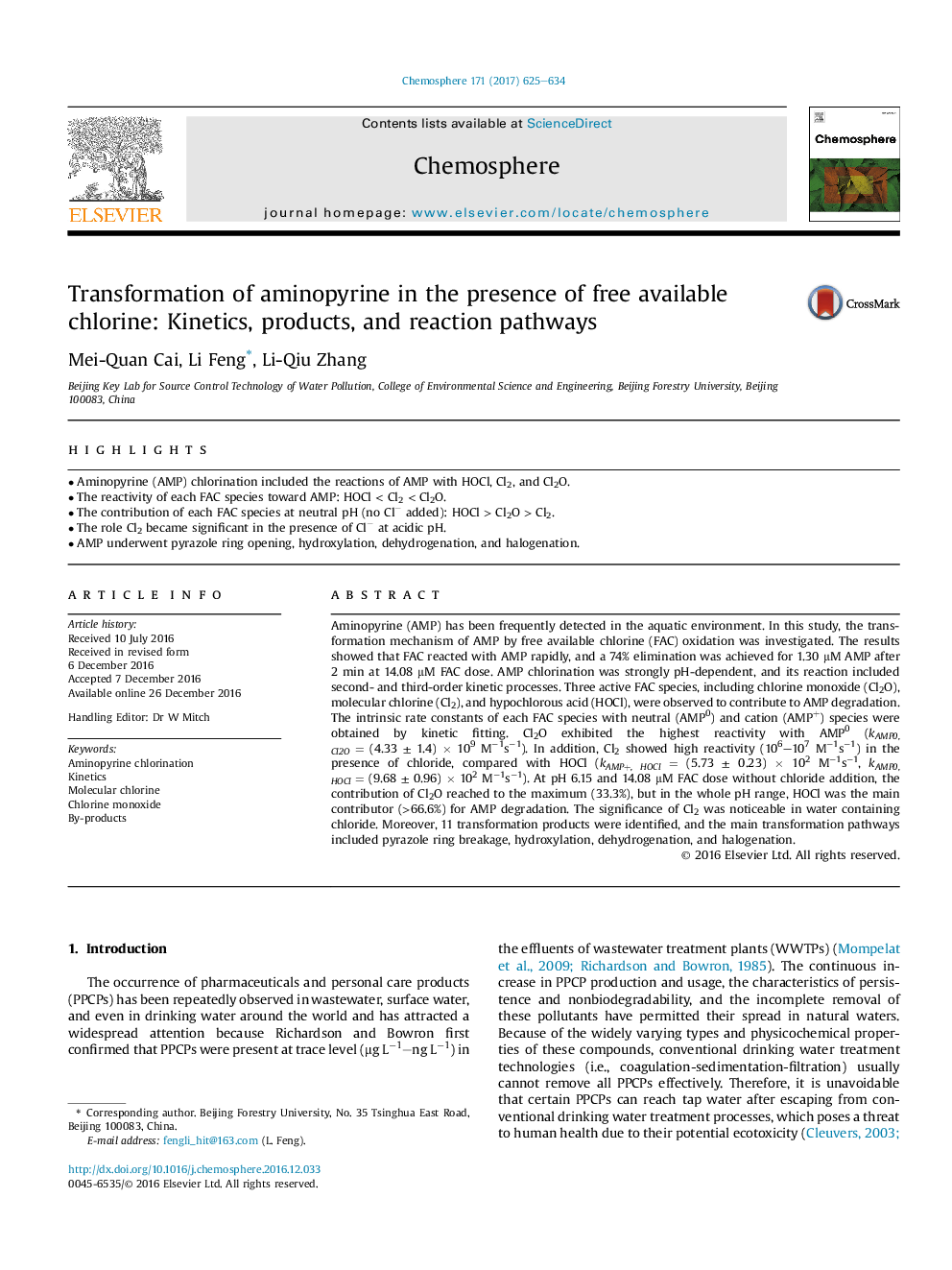| کد مقاله | کد نشریه | سال انتشار | مقاله انگلیسی | نسخه تمام متن |
|---|---|---|---|---|
| 5746400 | 1618800 | 2017 | 10 صفحه PDF | دانلود رایگان |
- Aminopyrine (AMP) chlorination included the reactions of AMP with HOCl, Cl2, and Cl2O.
- The reactivity of each FAC species toward AMP: HOCl < Cl2 < Cl2O.
- The contribution of each FAC species at neutral pH (no Clâ added): HOCl > Cl2O > Cl2.
- The role Cl2 became significant in the presence of Clâ at acidic pH.
- AMP underwent pyrazole ring opening, hydroxylation, dehydrogenation, and halogenation.
Aminopyrine (AMP) has been frequently detected in the aquatic environment. In this study, the transformation mechanism of AMP by free available chlorine (FAC) oxidation was investigated. The results showed that FAC reacted with AMP rapidly, and a 74% elimination was achieved for 1.30 μM AMP after 2 min at 14.08 μM FAC dose. AMP chlorination was strongly pH-dependent, and its reaction included second- and third-order kinetic processes. Three active FAC species, including chlorine monoxide (Cl2O), molecular chlorine (Cl2), and hypochlorous acid (HOCl), were observed to contribute to AMP degradation. The intrinsic rate constants of each FAC species with neutral (AMP0) and cation (AMP+) species were obtained by kinetic fitting. Cl2O exhibited the highest reactivity with AMP0 (kAMP0, Cl2O = (4.33 ± 1.4) Ã 109 Mâ1sâ1). In addition, Cl2 showed high reactivity (106-107 Mâ1sâ1) in the presence of chloride, compared with HOCl (kAMP+, HOCl = (5.73 ± 0.23) Ã 102 Mâ1sâ1, kAMP0, HOCl = (9.68 ± 0.96) Ã 102 Mâ1sâ1). At pH 6.15 and 14.08 μM FAC dose without chloride addition, the contribution of Cl2O reached to the maximum (33.3%), but in the whole pH range, HOCl was the main contributor (>66.6%) for AMP degradation. The significance of Cl2 was noticeable in water containing chloride. Moreover, 11 transformation products were identified, and the main transformation pathways included pyrazole ring breakage, hydroxylation, dehydrogenation, and halogenation.
Journal: Chemosphere - Volume 171, March 2017, Pages 625-634
